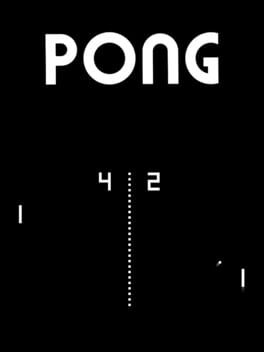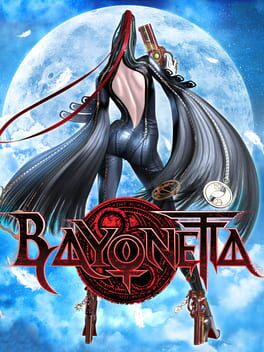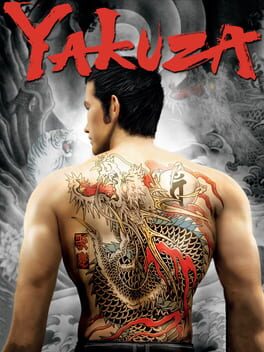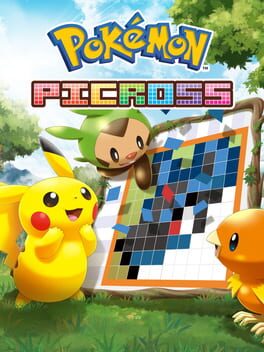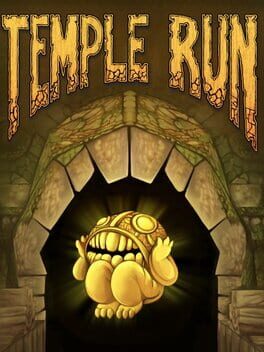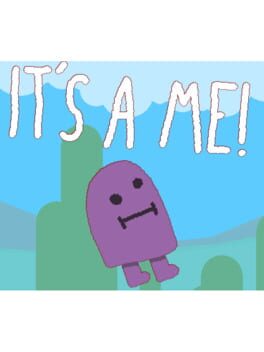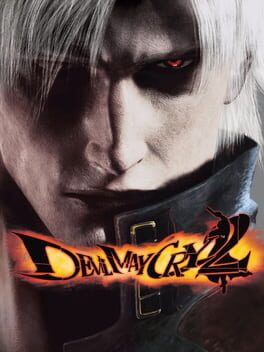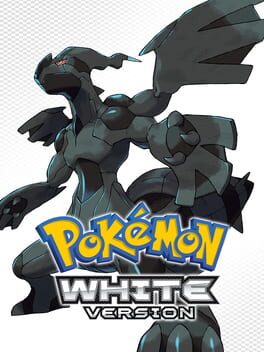Tauranoro
1972
2004
The people calling this game a tech demo aren't necessarily wrong. Half-life 2 runs on a (at the time) brand new proprietary engine, one that Valve is 1000% confident in. The Source Engine would, in fact, come to define the aestethic and brand of most of Valve's titles. Technology-wise, Half-life 2 is one of the greatest successes a single company could hope for, one that partly built the Valve we know today.
It would be dismissive to call the game just a tech demo, when it is a complete experience; one that is propelled forward by the new tech. The gravity gun is the perfect example. One can play the game entirely by only busting it out during puzzles (Citadel aside, even Ravenholm could be beaten without using it to throw a single sawblade against a zombie) but the fact that it can become one of Freeman's most lethal weapons makes it incredibly fun to use.
That said, it may be a bit puzzling as a sequel to 1998's Half-Life. That game was very action-focused, putting the player in situations where thinking fast and applying the right tool to the right situation was necessary for survival. In that game human enemies were bloodthirsty, cunning and lethal, which coupled with their robotic patterns of speech, made them somehow more terrifying than 2's Combine. The latter are scary at first, when they chase you around City 17 while you are unarmed; but as soon as you pick up a weapon they are revealed to basically be meat puppets, losing all sense of presence as soon as their health drops to zero, their bodies flopping to the ground in an unintended comical way. 2 must know this, as it relies mostly on (very strong and memorable) setpieces that take center stage and where the enemies are just a part of it. Half-Life 1 had plenty of setpieces (the fights against black ops assassins, the bridge and cliff sections in Surface Tension spring to mind) but in 2 they are more varied, thanks in great part to the inclusion of drivable vehicles.
Story and characters change drastically in the sequel. Where 1s plot and characters were in large part flat and one-dimensional, 2 fleshes out its supportive cast, flexing its impressive facial expressions of the Source Engine.
The character who instead loses the most from this exchange is Gordon Freeman. Where in the first game he had complete freedom to act in the structure he's given (the messiah that saves scientists and guards alike, the psychopath who murders his peers with glee, the opportunist who will kill a guard in cold blood for ammo or a gun) is now flattened into an infallable saviour of humanity. I won't argue it is bad for the story, but for ceratin players it may hurt their immersion, which is bad in itself.
There is also a throughline between the two games, the hallmark of a good series: the iconography. It's no accident that something as simple as a black and red crowbar has become an iconic symbol; not simply because it's an unorthpdox fps melee weapon, but as a tool that both games give you plenty of targets for, whether they be boxes, planks or headcrabs. It also smartly maintains the amazng sounds of the first game: the medic and HEV stations and the original voice actors for Kleiner, Barney and G-man.
I want to conclude this by talking about the latter figure. He (they? It?) is the only character that has a consistent and consistently compelling writing in both titles. The first game's blockiness and voice performance made him even more alien than the rest of the cast and the game's quirks only amplified that. Half-Life 2, despite its marked improvements in the graphics and fidelity department, continues the tradition by finding even more visual tricks to maintain the mystery of his character, shedding just enough light in his plans while not revealing all of its hand regarding the big monster and puppeteer of the franchise.
Half-Life 2 is a triumph. One that Valve is still scared to follow up properly. Hopefully Alyx is a sign of things to come. Hopefully we can all one day play Half-Life 3.
It would be dismissive to call the game just a tech demo, when it is a complete experience; one that is propelled forward by the new tech. The gravity gun is the perfect example. One can play the game entirely by only busting it out during puzzles (Citadel aside, even Ravenholm could be beaten without using it to throw a single sawblade against a zombie) but the fact that it can become one of Freeman's most lethal weapons makes it incredibly fun to use.
That said, it may be a bit puzzling as a sequel to 1998's Half-Life. That game was very action-focused, putting the player in situations where thinking fast and applying the right tool to the right situation was necessary for survival. In that game human enemies were bloodthirsty, cunning and lethal, which coupled with their robotic patterns of speech, made them somehow more terrifying than 2's Combine. The latter are scary at first, when they chase you around City 17 while you are unarmed; but as soon as you pick up a weapon they are revealed to basically be meat puppets, losing all sense of presence as soon as their health drops to zero, their bodies flopping to the ground in an unintended comical way. 2 must know this, as it relies mostly on (very strong and memorable) setpieces that take center stage and where the enemies are just a part of it. Half-Life 1 had plenty of setpieces (the fights against black ops assassins, the bridge and cliff sections in Surface Tension spring to mind) but in 2 they are more varied, thanks in great part to the inclusion of drivable vehicles.
Story and characters change drastically in the sequel. Where 1s plot and characters were in large part flat and one-dimensional, 2 fleshes out its supportive cast, flexing its impressive facial expressions of the Source Engine.
The character who instead loses the most from this exchange is Gordon Freeman. Where in the first game he had complete freedom to act in the structure he's given (the messiah that saves scientists and guards alike, the psychopath who murders his peers with glee, the opportunist who will kill a guard in cold blood for ammo or a gun) is now flattened into an infallable saviour of humanity. I won't argue it is bad for the story, but for ceratin players it may hurt their immersion, which is bad in itself.
There is also a throughline between the two games, the hallmark of a good series: the iconography. It's no accident that something as simple as a black and red crowbar has become an iconic symbol; not simply because it's an unorthpdox fps melee weapon, but as a tool that both games give you plenty of targets for, whether they be boxes, planks or headcrabs. It also smartly maintains the amazng sounds of the first game: the medic and HEV stations and the original voice actors for Kleiner, Barney and G-man.
I want to conclude this by talking about the latter figure. He (they? It?) is the only character that has a consistent and consistently compelling writing in both titles. The first game's blockiness and voice performance made him even more alien than the rest of the cast and the game's quirks only amplified that. Half-Life 2, despite its marked improvements in the graphics and fidelity department, continues the tradition by finding even more visual tricks to maintain the mystery of his character, shedding just enough light in his plans while not revealing all of its hand regarding the big monster and puppeteer of the franchise.
Half-Life 2 is a triumph. One that Valve is still scared to follow up properly. Hopefully Alyx is a sign of things to come. Hopefully we can all one day play Half-Life 3.
1998
2009
2005
After not touching the series for over a year, stomping through good ol' Kamurocho just felt right. It's especially appropriate to do so with the first ever title in the franchise. As a veteran of the series, it's striking just how many things the team got right on their first try. Kiryu's style is here in its most basic form, yet extremely satisfying, despite the jankiness, some of which not even the later titles managed to shed. Most importantly, the series' heart is here, its lust for life and joy of new experiences already present.
It's not flawless, as noted with the not-so-stellar combat, the english dub adds a b-movie feel (charm, even?) which often takes out of the scene; in Nishiki's case it tackles you from the top of the Millennium Tower straight into Gachimuchi. The "Ten years in the joint made you a fucking pussy" line is delivered with a tone not too dissimilar to what you might hear on an adult video.
That said, I cannot be mad at this game. Despite its hiccups it's elevated in many regards. The essence of the city, the people who inhabit it, their lives, their tribulations and triumphs, the music that fills your ears whenever a fight breaks out, and the heartful story: that of a man of two halves, ruthless gangster and kind soul, a chimera who has to fight harder than everyone to get what he wants, ending up with a bittersweet taste in his mouth when everything's done.
Any Yakuza/RGG fan owes it to themselves to play the original, especially now that the Yakuza: Restored project is complete. The series was just as soulful in 2005 as it is today; go see for yourself. As the game would say: have no regrets!
It's not flawless, as noted with the not-so-stellar combat, the english dub adds a b-movie feel (charm, even?) which often takes out of the scene; in Nishiki's case it tackles you from the top of the Millennium Tower straight into Gachimuchi. The "Ten years in the joint made you a fucking pussy" line is delivered with a tone not too dissimilar to what you might hear on an adult video.
That said, I cannot be mad at this game. Despite its hiccups it's elevated in many regards. The essence of the city, the people who inhabit it, their lives, their tribulations and triumphs, the music that fills your ears whenever a fight breaks out, and the heartful story: that of a man of two halves, ruthless gangster and kind soul, a chimera who has to fight harder than everyone to get what he wants, ending up with a bittersweet taste in his mouth when everything's done.
Any Yakuza/RGG fan owes it to themselves to play the original, especially now that the Yakuza: Restored project is complete. The series was just as soulful in 2005 as it is today; go see for yourself. As the game would say: have no regrets!
2017
Playing Hollow Knight and coming out of it saying: "Uh, yeah, it's like, Metroidvania Dark Souls dude." is a take so shallow that a mere glance at the store page's screenshots would prove that to be the case. Yet, after finishing the game it's also the most glowing compliment I can give it, as it marries the components of both styles in a remarkably elegant way.
The moment-to-moment gameplay is Castlevania, the environments Metroid, the level progression and music both at the same time! Add to that the atmosphere typical of a dying world, as well as elements like recovering lost resources after death, and you should already know where this sentence is heading.
The atmosphere of Hallownest is one of the densest, thickest and most engrossing you can find in gaming, where all characters, the warm and hospitable, the engimatic and elusive and the outright hostile, give the world a feeling of being lived in and a life and identity of its own. With the compliments out of the way, I would also like to vent about the size of the map. It is way too dang big, to the point where traversing it is a chore and I found myself constantly praying for quicker traversal tools.
Where the game should have taken less from Dark Souls is the main story (which is the only part of the plot I can discuss, having not bothered with the add-ons). That one is too much like FromSoft's seminal work. But we're getting into spoiler territory.
Another point of contention I have with Hollow Knight is its spells and nail techniques. The former feel a bit useless if you're willing to grow a spine and face the enemy head-on, locking eyes and unleashing a storm of attacks. Normal attacks that is. I rarely ever used the special nail techniques, since they are situational at best. Why would I want to charge up special moves when the additional effects they have aren't worth the effort compared to a simple string of normal attacks?
All things said, the game really is a cute little gem and i see why people like it so much, but it just didn't blow me away. I've seen a lot of (overblown) praise from my friend circle about this, so my expectations, as with any game which receives too much hype and acclaim, were somewhat let down. But it speaks volumes that a game I only played because it was in a bundle and gave me something to talk about with some nerdy girls at a party kept me going way after the day of that celebration.
The moment-to-moment gameplay is Castlevania, the environments Metroid, the level progression and music both at the same time! Add to that the atmosphere typical of a dying world, as well as elements like recovering lost resources after death, and you should already know where this sentence is heading.
The atmosphere of Hallownest is one of the densest, thickest and most engrossing you can find in gaming, where all characters, the warm and hospitable, the engimatic and elusive and the outright hostile, give the world a feeling of being lived in and a life and identity of its own. With the compliments out of the way, I would also like to vent about the size of the map. It is way too dang big, to the point where traversing it is a chore and I found myself constantly praying for quicker traversal tools.
Where the game should have taken less from Dark Souls is the main story (which is the only part of the plot I can discuss, having not bothered with the add-ons). That one is too much like FromSoft's seminal work. But we're getting into spoiler territory.
Another point of contention I have with Hollow Knight is its spells and nail techniques. The former feel a bit useless if you're willing to grow a spine and face the enemy head-on, locking eyes and unleashing a storm of attacks. Normal attacks that is. I rarely ever used the special nail techniques, since they are situational at best. Why would I want to charge up special moves when the additional effects they have aren't worth the effort compared to a simple string of normal attacks?
All things said, the game really is a cute little gem and i see why people like it so much, but it just didn't blow me away. I've seen a lot of (overblown) praise from my friend circle about this, so my expectations, as with any game which receives too much hype and acclaim, were somewhat let down. But it speaks volumes that a game I only played because it was in a bundle and gave me something to talk about with some nerdy girls at a party kept me going way after the day of that celebration.
2015
Picross is really fun! If the game weren't so aggressively monetized it would probably be my new addiction.
That said, it's probably better for the game to be freemium. Not for the average player back in 2015 of course, as the system is garbage and essentially pay-to-play. I also probably don't need another distraction, though gated behind a piece of hardware I hardly ever touch.
Right now though, with the looming eshop shutdown, Pokémon Picross is a useful software to have on your 3ds, just in case one feels the urge to, er, "experiment with and expand the hardware's capabilites in regards to sotware interaction".
The 3DS is dead. Long live the 3DS.
That said, it's probably better for the game to be freemium. Not for the average player back in 2015 of course, as the system is garbage and essentially pay-to-play. I also probably don't need another distraction, though gated behind a piece of hardware I hardly ever touch.
Right now though, with the looming eshop shutdown, Pokémon Picross is a useful software to have on your 3ds, just in case one feels the urge to, er, "experiment with and expand the hardware's capabilites in regards to sotware interaction".
The 3DS is dead. Long live the 3DS.
2011
2022
2019
We're all blessed/cursed to live in the age where the Internet is ubiquitous. In it we pour pieces of ourselves, in a gigantic web of communications, friendships, relationships, rivalries, petty grievances and every human interaction. Hypnospace Outlaw is like a mirror held up to us, in which we see a microcosm of our Internet selves, frozen in time in the moment we left our digital footprints. It's a story where you visit a fictional past, one unabashedly based on our actual history, whose concerns are still distressingly relevant twenty years later. Alexandria still burns, our past is still lost each passing hour. One day, this site will be no more, Steam will be no more, we will likely be no more, no matter how remote that day may be or seem. This doesn't mean being here is meaningless; even if it were, what's the point in having all the miracolous opportunities we're afforded and not using them?
Enjoy today, now. And if something breaks? There's a saying where I come from: "Pope's dead, make another".
Keep on rocking, reader. Godspeed.
Enjoy today, now. And if something breaks? There's a saying where I come from: "Pope's dead, make another".
Keep on rocking, reader. Godspeed.
2003
2008
This review contains spoilers
It's a surreal experience, a world where the Aristotelian physics of the four elements are flipped on their head and morphed in a nearly dystopic way (just thinking about a sea of plastic hits too close to home).
The gameplay is functional and the music off-kilter, perfectly fitting the bizarre nature of the game. But the main thing I took away from this title is the story of neglect and familiar abandon. An absent father becoming bitter and walking down a literally nihilistic road of total erasure of a world he, indirectly, helped to create.
The gameplay is functional and the music off-kilter, perfectly fitting the bizarre nature of the game. But the main thing I took away from this title is the story of neglect and familiar abandon. An absent father becoming bitter and walking down a literally nihilistic road of total erasure of a world he, indirectly, helped to create.
